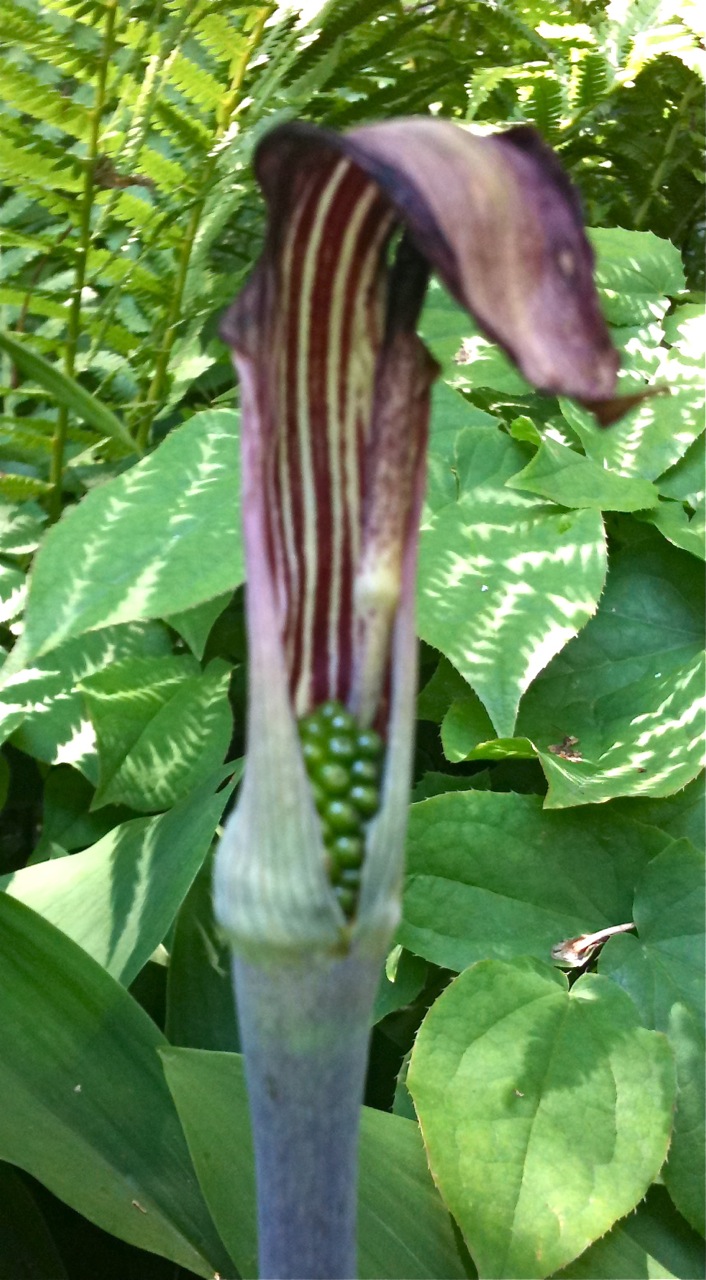Jack-in-the-Pulpit
 Jack-in-the-Pulpit, Arisaema triphyllum, is a beautiful woodland plant said to be native to all Illinois counties, but not all that common in gardens. The name is also used to refer to two very similar subspecies.
Jack-in-the-Pulpit, Arisaema triphyllum, is a beautiful woodland plant said to be native to all Illinois counties, but not all that common in gardens. The name is also used to refer to two very similar subspecies.
 This delicate plant, that some botanists call stemless, is always a joy when it returns in spring. A slender shoot appears, growing to a foot or more in height, then unfurls into a trifoliate fan. On the stalk then appears a curling, purple hood, which unfolds to reveal a green raspberry-like structure, or corm. The fanciful resemblance to a monk or cleric shrouded in a hood or high collar lends the plant its name.
This delicate plant, that some botanists call stemless, is always a joy when it returns in spring. A slender shoot appears, growing to a foot or more in height, then unfurls into a trifoliate fan. On the stalk then appears a curling, purple hood, which unfolds to reveal a green raspberry-like structure, or corm. The fanciful resemblance to a monk or cleric shrouded in a hood or high collar lends the plant its name.
Jack-in-the-Pulpit loves dense, shady, moist areas with acidic soil. The soil is best when undisturbed, and covered with a layer of leaves in winter, the conditions one would find under decidious trees in the wild; the acidic leaf cover inhibits competing plants and help Jack return in spring.
Jack-in-the-Pulpit arrives after the silla and Virginia bluebells have died back, filling a nice gap during May and June. Certain gnats and thrips pollinate its odd bloom. In summer, the corm of this Illinois woodland native turns bright red. However, after that it is touch and go as to whether it will last into summer heat; if it gets hot and dry, say goodbye til next year. Assuming some soil moisture, however, it'll come back even bigger, and is said to reach up to two feet tall. The specimens below, from a planting a decade old, are about 15" tall and each leaf is about 9" long.
- Printer-friendly version
- Log in to post comments

